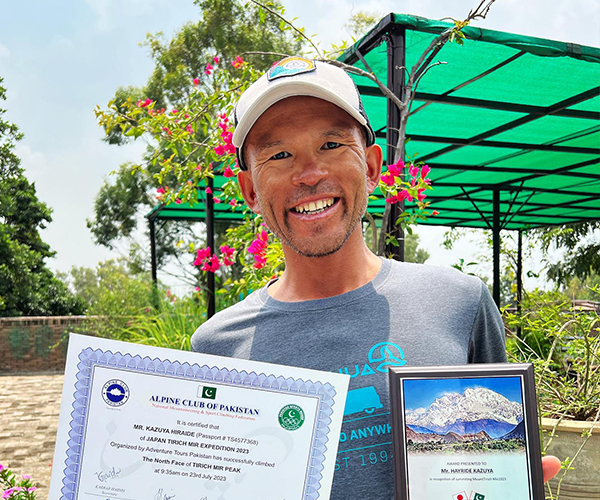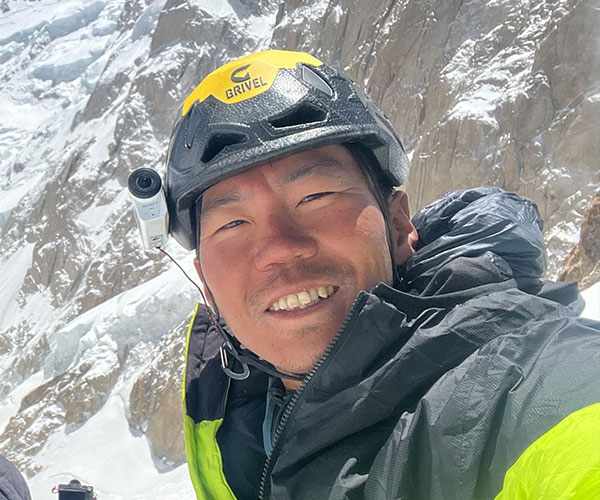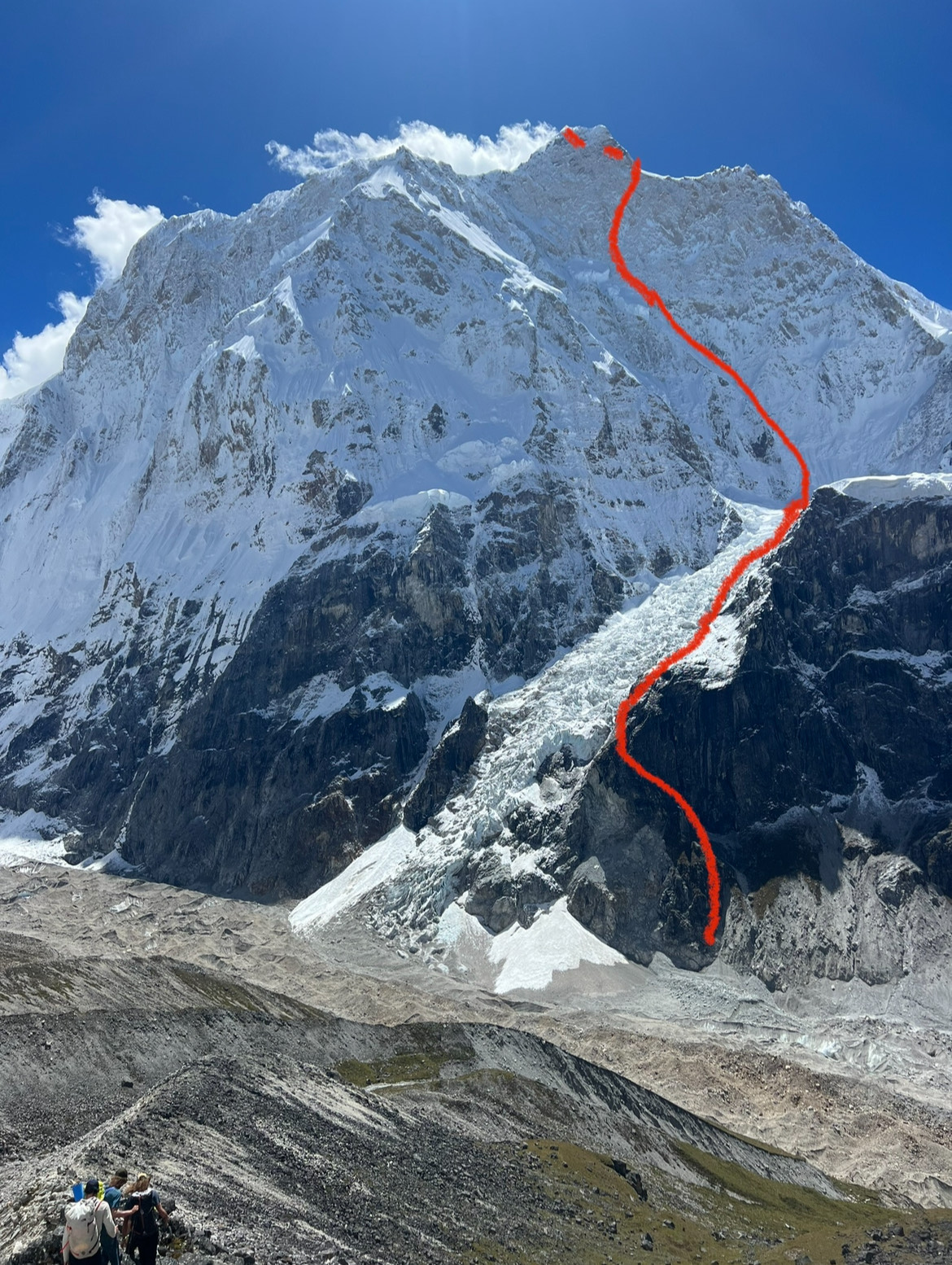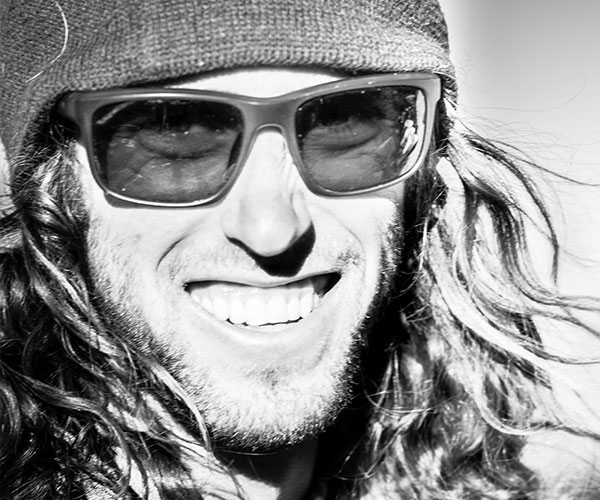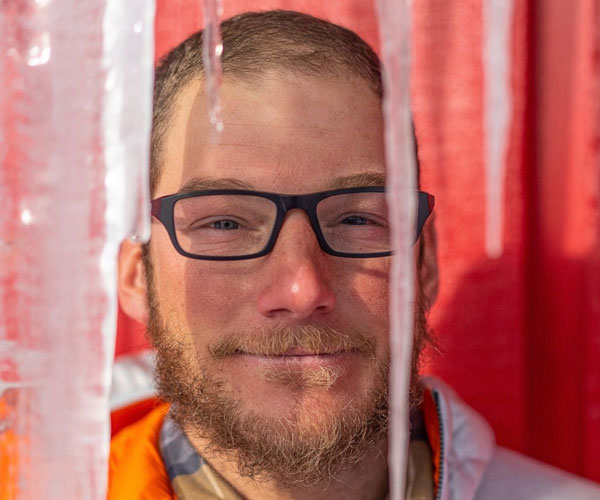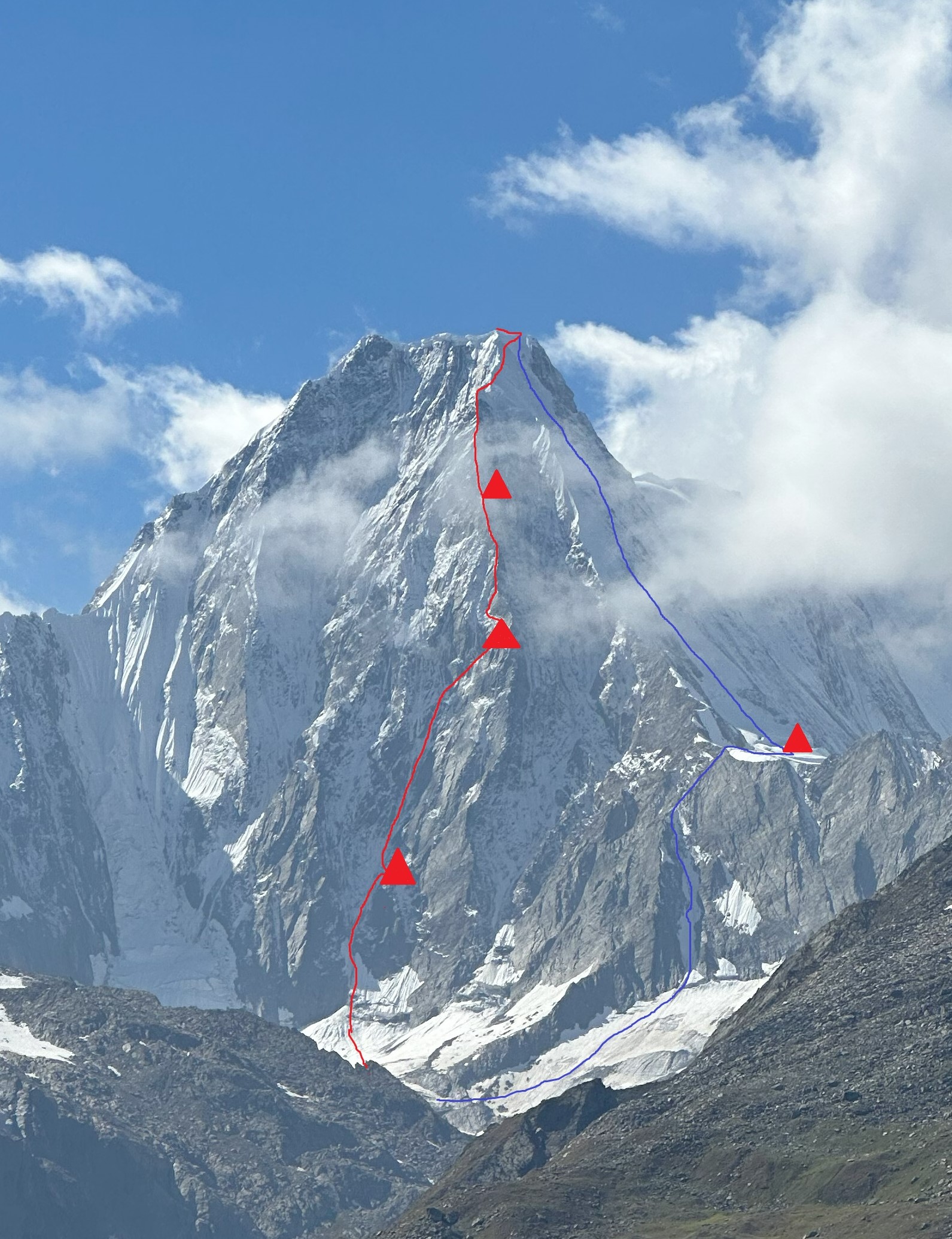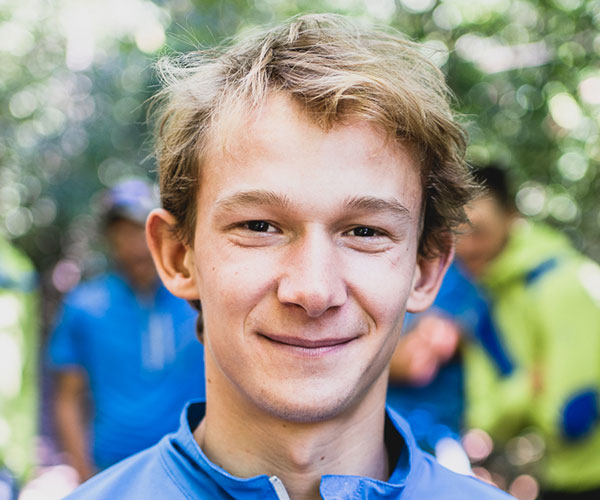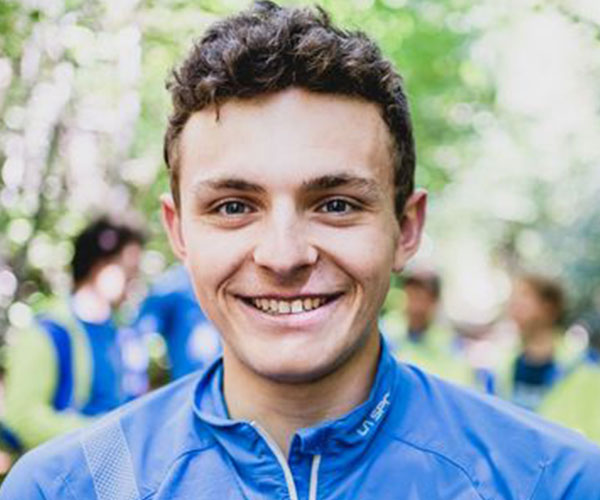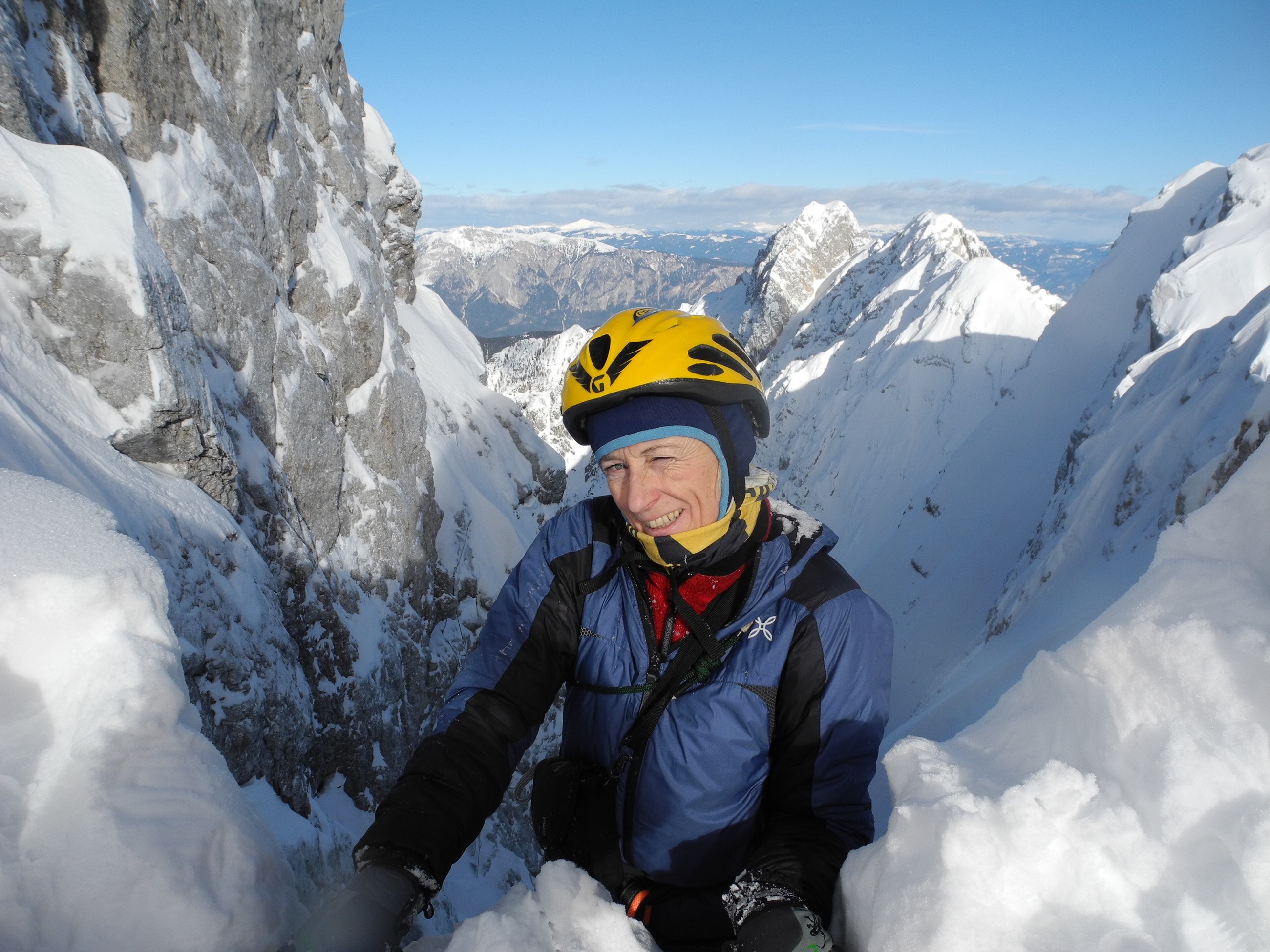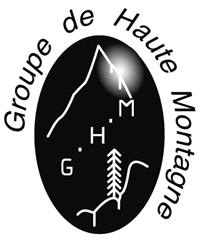Tirich Mir (7,708m)
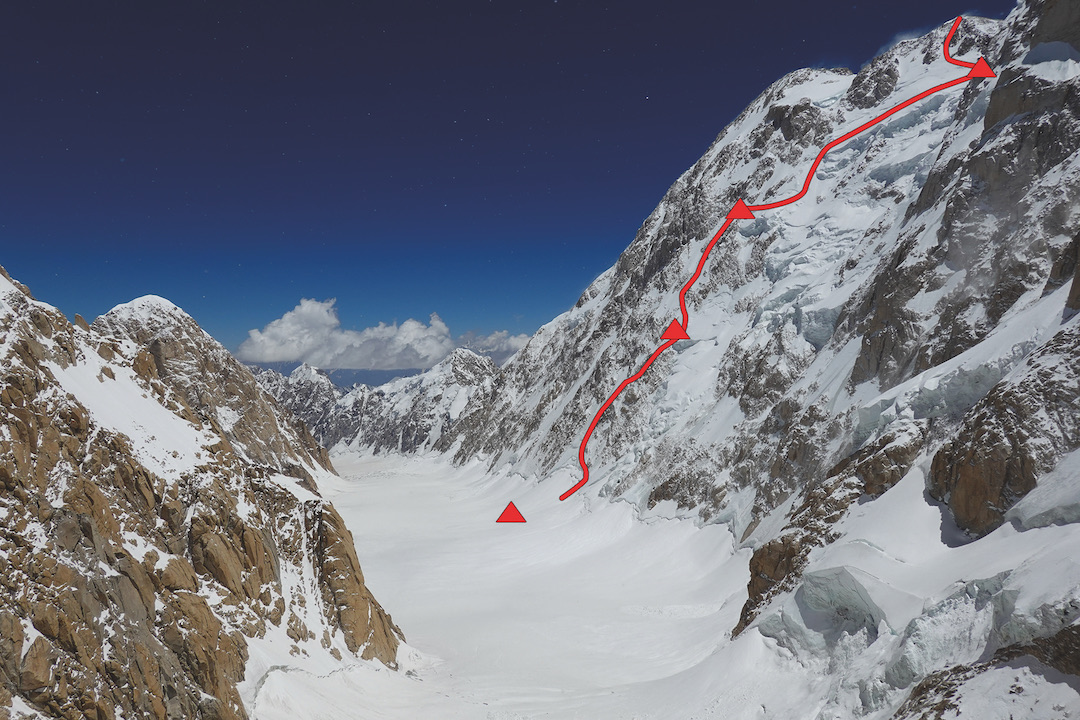
First ascent of The Secret Line on the north face of Tirich Mir (7,708m) in the Hindu Kush, Pakistan, from July 17-23. Traversed the mountain by descending the normal route to the northwest.
Tirich Mir is the highest mountain in the Hindu Kush and as such was relatively popular in the latter half of the 20th Century. However, lying in the far corners of northwest Pakistan, very close to the border with Afghanistan, it is accessed through Chitral and has seen almost insignificant activity since 9/11 due to the perceived heightened terrorist threat in that area. For some years, the Japanese alpinist Kazuya Hiraide had been interested in the north face and in 2019 a local agent told him that tourists were now being granted permission to re-enter the area. He applied for a permit but was refused. Then COVID-19 intervened, and it was not until the summer of 2023 that he and Kenro Nakajima reached the mountain.
Direct access to the vast north face of Tirich Mir is blocked by an icefall almost 1,000m high. A Czechoslovakian expedition, which in 1967 established the current normal route via the Upper Tirich Glacier and northwest ridge, first climbed though the icefall to see if there was a route from that side. It has not been climbed since and the intervening years have made it very dangerous. Nakajima commented that he had “never seen an icefall with so much widespread destruction”.
The Japanese pair needed a work-around. Using satellite photos, they plotted a route into the glacier basin below the north face that would follow the initial section of the normal route and then cross a high col on the long northwest ridge of Tirich Mir. After inspecting the col and caching gear, they acclimatized to 6,300m on the normal route, then set out from base camp at 4,600m on July 17. That night they camped at 5,400m and the following day crossed the 6,200m col. The far side was steep and exposed to rockfall in the warmer than normal temperatures that month. Taking a pragmatic approach, the pair fixed four ropes to aid a retreat. Eight rappels and some downclimbing took them to the western end of the basin. That same day they crossed the basin, unvisited since 1967, to the foot of the north face and camped at 5,500m.
Next day, complex route finding led to their third bivouac (at 6,150m), where they were able to use an ice hammock to construct a tent platform.
Difficult snow and ice led to a poor fourth bivouac at 6,750m. Above, lay the biggest uncertainty of the route - a large serac barrier. Fortunately, the following morning they were able to pass this on the left via hard ice and reach the 7,200m col between Tirich Mir and Tirich West I, where they made their fifth bivouac. They had now joined the normal route, which arrives at this point from the far side.
On the 23rd Hiraide and Nakajima left their camp and set off for the summit. There were many different lines on the broad upper ridge and the two climbed a couple of steep pitches, which they rappelled during the descent. Mostly, they simul-climbed, reaching the summit at around 9:30 a.m. and regaining their camp at noon. Feeling strong, they continued down the normal route, rappelling the crux couloir to the Upper Tirich Glacier and descending this to 6,300m. Next day they regained base camp.
This long, complex and highly committing adventure was considered by the jury to be a splendid traverse of a high-altitude mountain. Jury members also noted that almost no prior information was available to help with the ascent of the hidden north face. The use of 200m of fixed rope to access the climb (sadly not removed after the ascent) was considered a minor flaw compared to the overall scale of the undertaking and its successful completion.
